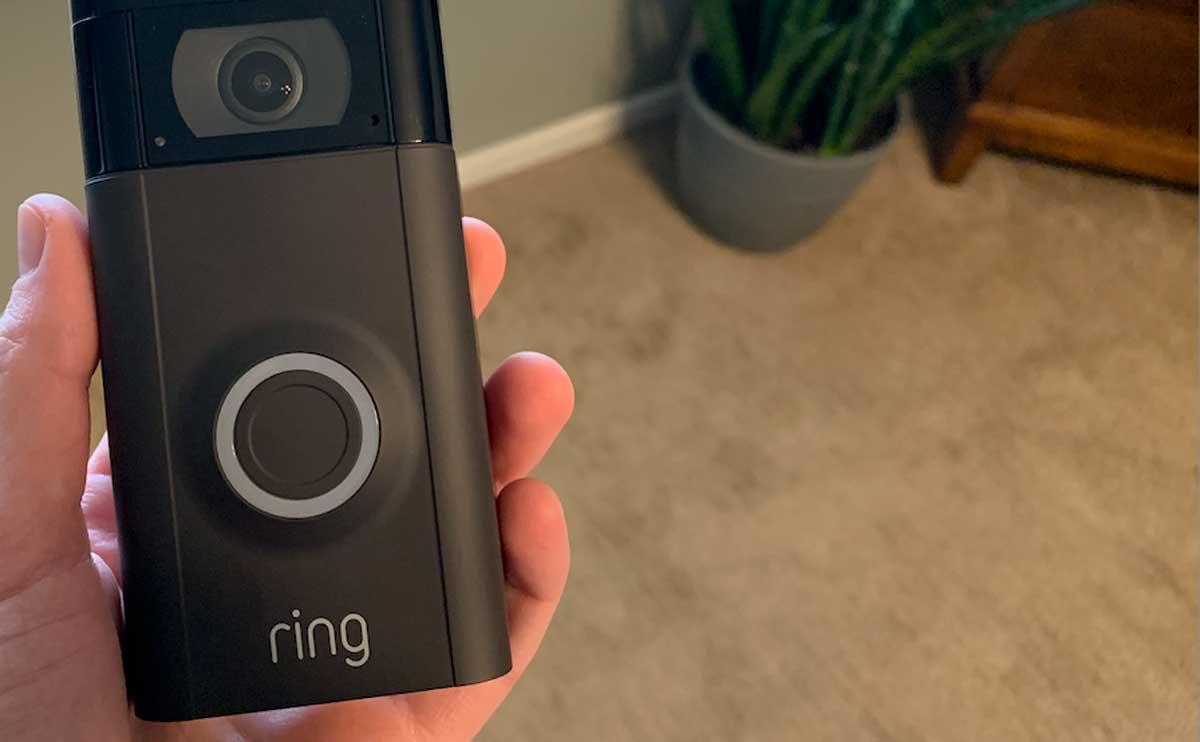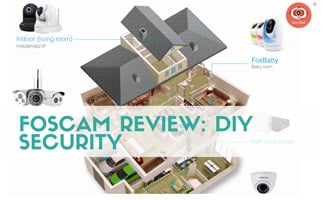How to Install Security Cameras: A Step-by-Step Guide
When you purchase through links on our site, we may earn a commission. Here’s how it works.
When we purchased our home a few years back, we knew security cameras were a must. We wanted to have a way to monitor the porch to protect our packages from porch thieves since we’re frequent online shoppers. Fortunately, we’ve never had a break-in or a box taken from our doorstep since moving in.
Having security cameras around the exterior of our home gives us peace of mind. We even installed several indoors in areas we don’t use much so that we can keep an eye on those locations. The outdoor cameras are fun because now and then, we’ll see a bunny or neighbor cat visiting our front door.
Looking to install some cameras around your home too? Based on our personal experience, we’re here to help you choose the best places to put your security cameras as well as what type of features you should look for in a camera.
Everything You Ever Wanted To Know About Security Cameras
If you’re just getting started with your search for a security camera and want to understand what type of camera might be best for your particular situation before you dive into the installation, check out our comprehensive security cameras 101 guide. Our experts address everything from how security cameras work to going in-depth on the types of security cameras on the market today. You’ll learn the differences between wired and wireless cameras, traditional mounted cameras vs. app-based cameras, and even the Deep Sentinel system, where human guards monitor feeds and actively deter intruders on your behalf.
Choose The Best Security Cameras
Home surveillance systems have come a long way. They started with a licensed installer coming to your home with bulky equipment and endless strings of cords. High monthly bills and lousy image quality followed.
Today, we have access to DIY solutions that you can install yourself and monitor from your phone. If you want to purchase your own home surveillance cameras but aren’t sure where to begin your search, check out our best home security cameras article, which covers all types of cameras that can be installed in various locations, both indoor and outdoor.
Best Places To Install Security Cameras
You’ll want to make sure you’re installing your camera(s) in optimal locations around your home. Here are some common areas targeted by burglars; consider these when deciding where to place your camera(s):
- Near the front door
- Near the back door (check our reviews of the best doorbell cameras)
- Pointing toward the garage/driveway
- Aiming toward any sheds or buildings on your property
- Around first-level windows with low-lighting
- In low-traffic areas of your home with exterior entrances (basements, storage rooms, etc.)
By placing your cameras in these areas, you’re more likely to get a license plate number or facial recognition, which police may be able to use to catch a criminal. If a car is involved, a license plate may play a larger role in court than a face shot since criminals can wear masks to cover their faces.
Need help finding a good outdoor security camera for your home? Check out our outdoor security camera reviews for specific brand and model suggestions.
How Many Cameras Do I Need?
Make a list of the areas you want to be monitored in and around your home. How many entrance points do you have? Do you have any garages or sheds? Is there a hidden area where intruders can conceal themselves easily? Answering these questions will help you determine the number of cameras you need.
Security Camera Placement Tips
- Cameras with a smaller field of view (less than 75°) work best, facing an exterior door or parked car in the driveway or a doorway inside the home.
- Do not try and cover more than the camera can see clearly, or more than the area you’d like to monitor – since other movements, like cars on the street, could trigger motion.
- Cameras with a larger field of view (above 120°) are best to cover a wide area, like overlooking your driveway, backyard, or an open concept floor plan.
- Installing cameras under a porch or hanging roof can help shelter the camera from the elements.
- Put wire mesh around the camera as a layer of added security (without compromising the quality of the footage).
- Place cameras at least nine feet off the ground, so they can’t be tampered with easily (watch the video below to see why having your camera up higher can make a difference).
How To Install Security Cameras
If you go with wired cameras, the company may offer professional installation, or you may consider hiring a handyman. The cost of a professional can vary, and the installation process will vary, too, depending on the cameras you purchase.
If you choose the DIY route, there are two common ways to install home security devices: peel and stick contact strips and screws with a drill.
Indoors
Peel and stick contact strips are more common with indoor cameras because they don’t hold up to weather as well as screws do. Additionally, most people don’t want to screw holes into their walls. If the camera uses contact strips, you’ll want to make sure the surface is clean and dry before applying the sticky strip.
Outdoors
You’ll most likely be using a drill to screw the outdoor security camera to a fixed object. You may need a chair or ladder to get high enough up to secure the camera exactly where you want it mounted.
Most outdoor cameras require a few screws drilled into the outside of your house (or wherever you choose to mount the camera) through the camera’s mount. It’s pretty straightforward, but be sure to read your camera’s instructions to ensure you’re doing it correctly.
Installation Tips
Most companies make the installation process fairly simple these days. You’ll want to consider the camera’s needs before installation:
- How close does it need to be to your router?
- Does it need to be near an outlet?
- Will it need wires attached to it and the router?
Answering these questions will help you determine the ideal place to install your camera. Having a wireless security camera makes the setup process much easier because there are no wires to worry about. If this is a possibility for you, we recommend it. By contrast, CCTV cameras tend to be hardwired.
Tools Needed for Installing Your Security Camera
The tools you’ll need to install your camera depend on the type of camera you have. But typically, you’ll need:
- Stick-and-peel adhesives for indoor DIY cameras (these are usually included in the box).
- Drill and corresponding drill bits and accessories (anchors for drywall, masonry for brick, etc.).
- Wire cutters and clamps (for hardwiring) – and make sure you turn off power at the breaker before doing any electrical work. If at all in doubt, hire an electrician to perform the wiring for you.
- Mounting brackets and screws may be necessary if you’re installing your cameras at an angle. The manufacturer typically includes these, although for some Ring cameras, they can be purchased as an add-on.
Security Camera Setup Considerations
Before you mount your security camera (especially if you’re drilling), find out the camera specs and envision the area that will be covered. Does it make sense to cover this area – in other words, is it likely to be traversed by potential intruders? If you are monitoring an area that will be in darkness at night, consider getting a night vision camera.
Download the App
Virtually every camera now includes a corresponding app. In many cases, the app will guide you through the setup process (this is true with all Ring cameras, for example).
Sync the Camera to the App
Once you’ve downloaded the app, make sure you sync your cameras with the app. Many providers will make this easy – if the camera is not auto-detected via Bluetooth, for example – all you might need to do is scan a QR code on the back of the camera into the app or manually enter the camera IP address. Having trouble getting your camera synced? Let us know in the comments!
Should I Conceal My Security Cameras?
There are two thoughts here. If you hide your camera, thieves won’t realize there’s a camera they need to avoid, so they’re more likely to break into your home and be on camera. Plus, they won’t tamper with it and potentially ruin any evidence you may have obtained.
This is an excellent solution for convenience stores because burglars can almost guarantee the camera will capture their faces. However, for home security, we don’t recommend this.
Instead, we suggest displaying your cameras in plain sight. Why? Because it may stop would-be thieves in their tracks. You want your camera to be in their face the moment they approach your door. Plus, you’re more likely to get facial recognition or a license plate if you install the cameras strategically.
WiFi Security Cameras
Plug-and-play cameras are versatile for many uses, including home security, baby monitors, and pet cams. These multi-use WiFi security cameras are easy to relocate, and many have two-way voice so you can communicate with those at home while you are away. Find out which wireless security cameras make our top 3.
Were you able to get your security cameras installed? Let us know in the comments!



